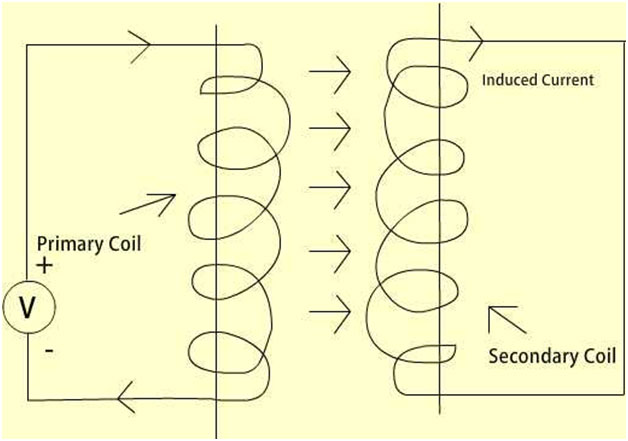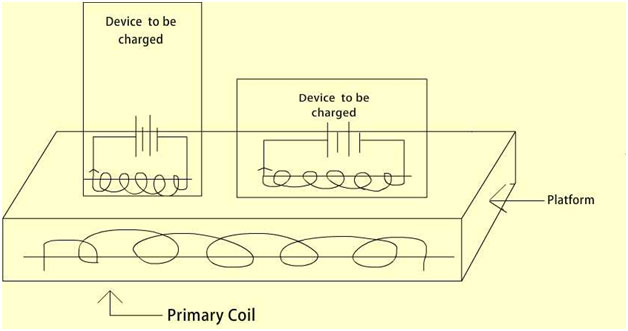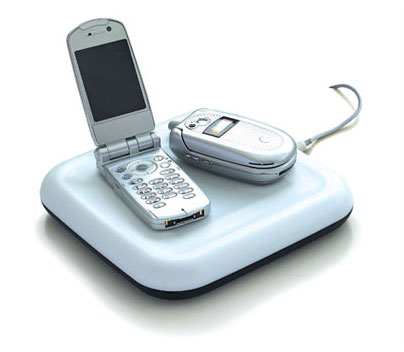Is this an unrealistic topic? To some of us it sounds like that but it is not! The phenomenon of wireless power transfer does exist and it is not new. Wireless power transfer was first proposed by Nikola Tesla in 1891. He illuminated a lamp wirelessly. Through wireless charging you can charge or power simultaneously more than one device, you will neither have to worry about the threats in the power cord nor about being getting entangled into them. Sounds Great! Let’s see how this technology works
The Phenomenon:
Wireless power works on the principle of induction coupling. Whenever current is passed through a wire, it produces magnetic field around it. When the wire is twisted in the form of coil, it boosts up the magnetic field. Now in induction coupling, there are two such coils placed close to each other but not connected, they are just placed near to each other having some space between them. The coils are named as primary and secondary coil. When primary coil is connected to an AC supply, magnetic field is also formed simultaneously and since its alternating current, magnetic field changes with time or it fluctuates according to the varying AC current. Now, as the secondary coil is placed near to the primary coil, it comes into contact with the varying magnetic field. Due to this, current is introduced in the secondary coil. Now more the number of turns on the coil more will be the electric field generated on secondary coil. This is what the basics of Induction Coupling states.

The device called as “Recharging Mat” by Splashpower and “Powerdesk” by Edison (company) works on the same principle as stated above. It has a platform on which the device to be charged is kept. The platform consists of a primary coil and the device to be charged consists of secondary coil connected to the battery. When the platform is connected to the power supply, the primary coil inside the platform forms magnetic field and when the secondary device is bought near to it. It starts charging.

The disadvantage of this technology is that one has to put the device on the platform or close to it every time one needs to charge it. 

Increasing the Range of Wireless Power
Following the research work by Nikola Tesla, MIT researchers developed a technique through which the power can be delivered wirelessly within a distance of two meters. They managed this by matching the resonance frequency of both the coils. It could be understood through an example: Imagine that there is a car parked along a sloppy road. Now, if you will try to push it down the slope, you will have to apply less power than pushing it up the slope. Yours and the car’s resonance were same at the time of pushing it down the slope, so that is the principle working behind the matching of coil’s resonance. If the resonant frequency of two objects is matched then the transfer of energy can be made more effectively.
The design of the coils was certainly changed a bit. The induction coil’s ends were attached with the plate that acts as a parallel plate capacitor. So whenever, electricity is applied through the primary coil, its resonance frequency is the product of inductance and the capacitance of the inductor and capacitor respectively. Through their experiment, they were able to light up the lamp within two meters range of the primary coil. One another advantage of this research was that coupling of coils take place only when the two coils have same resonance frequency, if their frequency does not match, there will be no transfer of energy. Through this method, more than one device could be charged, placing within the range of primary coil.
Filed Under: How to


Questions related to this article?
👉Ask and discuss on Electro-Tech-Online.com and EDAboard.com forums.
Tell Us What You Think!!
You must be logged in to post a comment.